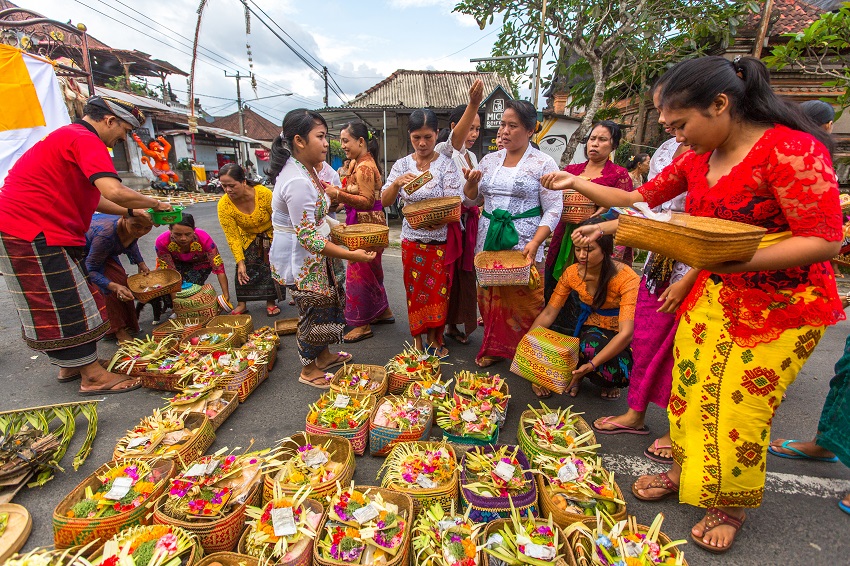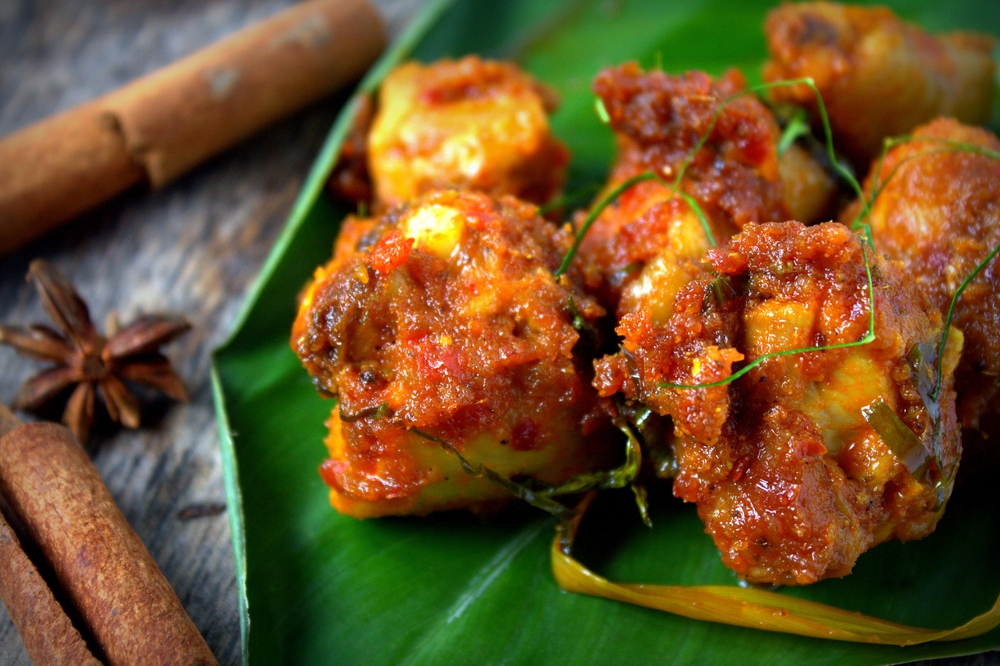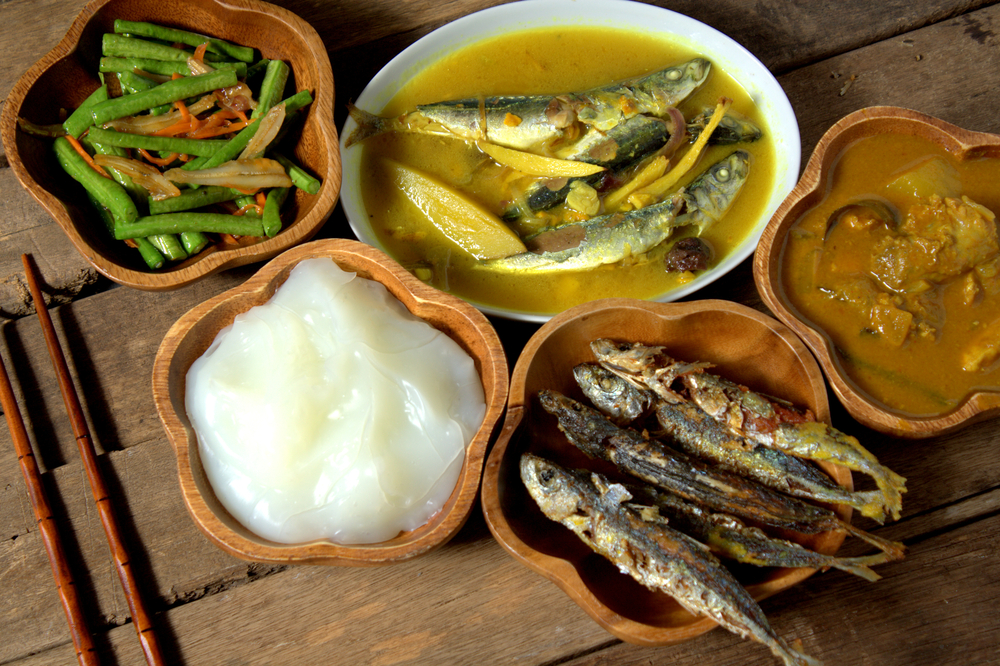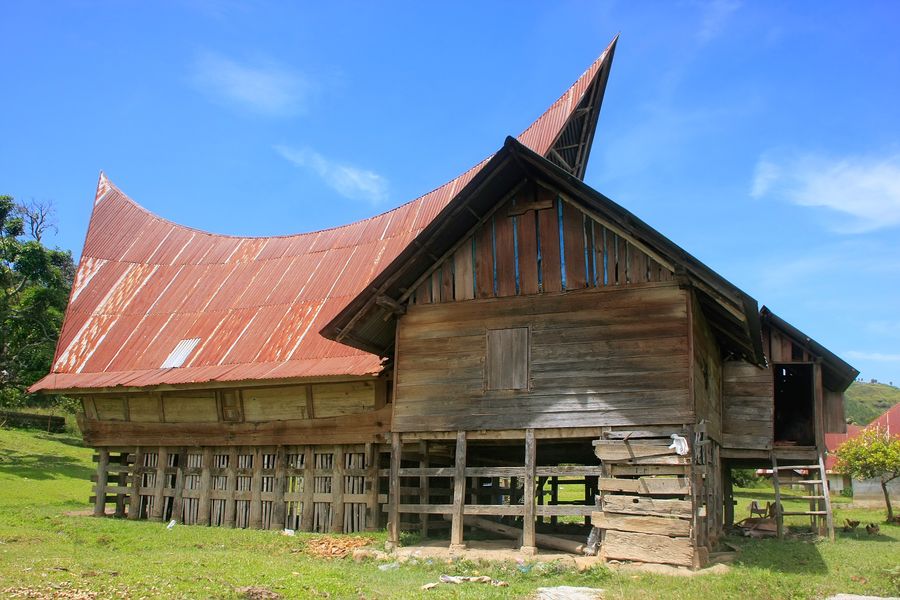Indonesia - ritual and festival
Varied ethnic groups and religions in Indonesia give birth to a variety of traditions and ceremonies regarding beliefs in superstitions and religious rituals.
Indonesia is an Islamic-dominated country where its population is 88.22% Islamic. (Jesudas M.Athyal,Editor, 2015:117) Therefore, Islamic religious days are national holidays too as the celebrations take place everywhere. Mawlid, for example, is held in the 12th month of the Islamic calendar to celebrate the birth of the Islamic prophet, Nabi Muhammad. It was held for the first time in Egypt by the older brother of Sultan Saladin in 1207. In Indonesia, this festival was held for the first time in the 1970’s with parades, feasts and giving money as presents to the children. However, varied ethnic groups, languages and religions make locally different celebrations being integrated with native rituals and beliefs. Bali, for example, is a holy land according to Hindu belief. Most of the people there are not Islamic, so the Mawlid celebration in Bali is pretty much influenced by Hinduism. Meanwhile in Baten, it is preferred by over 1,000 Islamic people in a year as they come and visit the Sultan cemetery. They also soak in a Mosque pond with a belief this will bring good luck. (Zainah R. Hasan, 2016)
Amid Islamic domination in Indonesia, Bali is the Hindu-populated area where Hindu rituals take place to worship Brahma, the creator god, Shiva, the destroyer and the transformer and Vishnu, the preserver and the protector. Considering the surroundings such as official buildings and other buildings, most of which are attached with the symbol of Garuda. It is evident the Balinese give importance to Vishnu because Garuda is his Vahana. (ดวงจันทร์ อาภาวัชรุตม์ เจริญเมือง, 2547:221) The Balinese believe in the logic of Trinity or a relation between the three things.
1. A relation between man and god: man need to have faith in god by worshipping at home and Vishnu temple. (ดวงจันทร์ อาภาวัชรุตม์ เจริญเมือง, 2547:221)
2. A relation between man and man: according the belief that every man was born out of Brahma, we are brothers and sisters. (ดวงจันทร์ อาภาวัชรุตม์ เจริญเมือง, 2547:221)
3. A relation between man and nature: with a belief that every river, tree and everywhere has a deity living in there, man should never destroy nature protected by Vishnu. (ดวงจันทร์ อาภาวัชรุตม์ เจริญเมือง, 2547:221)
Thus, god, man and nature are one. The resources should be preserved. If man destroy others or nature, man is destroying himself. Moreover, it is a belief that man is living between the good and the bad, so man need to live his life in balance not letting the bad overshadow. The belief gave birth to a ritual of filing teeth during childhood as an act of un-sharpening threads of evil deeds that might one day override the children of Vishnu. (ดวงจันทร์ อาภาวัชรุตม์ เจริญเมือง, 2547:221)
Moreover, there is another crucial religious festival marking the day when the good wins over the bad. Galungan Festival is the most important festival according to Hindu belief. It is held on the 11th week of the Balinese religious calendar and lasts for 10 days. Wooden pillars are set up and decorated with coconut leaves, banana leaves, fruits and other snacks making an offer to the dead ancestors who will come back on earth in a shape of deity during the festival. (Gouri Mirpuri,Robert Cooper,and Michael Spilling, 2012,177)
In terms of rituals dedicating to death, the Torajans in Sulawesi carry out a very interesting ritual deemed as their identity. They have a specific ritual for a certain social class and age of the dead.
1. Disilli is a ritual for a baby or an infant of the lower-class people. Only one pig is sacrificed. If the baby or the infant is dead before it grows a tooth, it is going to be buried under the big tree. (รัศมี ชูทรงเดช, 2535:188)
2. Dipasangbogi is a one-day ritual for a juvenile or an adult. One buffalo and eight pigs are sacrificed. (รัศมี ชูทรงเดช, 2535:188)
3. Dispatanglungbogi is a middle-class funeral. It takes 3 days 3 nights with 4 buffalos and some pigs being sacrificed. On the second day, the relatives give presents to the dead. There is going to be a dance dedicated to a life story of the dead as the act of farewell and wishing the dead would rest in peace. (รัศมี ชูทรงเดช, 2535:189)
4. Dipalimangbonggi is a middle-class funeral. It takes 5 days 5 nights with 8 buffalos and a lot pigs being sacrificed. (รัศมี ชูทรงเดช, 2535:190)
5. Dipapitungbonggi is a ritual for lower-upper class people. It takes 7 days with 10 buffalos and a lot of pigs being sacrificed. (รัศมี ชูทรงเดช, 2535:190)
6. Dirapai is the most complex and grandest ritual for the upper class of Torajans. The ritual has two sessions in which each takes 7 days and takes a pause for 6-12 months. (รัศมี ชูทรงเดช, 2535:190)
During the rituals, the villagers willingly help each other and bring food to the funeral while the relatives of the dead would go on a fast only having fruits and potatoes. 12 or 24 buffalos and 100 pigs are sacrificed. Dancing, cow fighting and rooster fighting are featured too. If the rituals take too long, the dead body is being preserved in a mummified style in the house. When the rituals are over, the body is moved to the cemetery where each is kept in rank of social class. The upper class is kept in the stone-carved valley where it is a family cemetery. A wooden doll is placed in front of each tomb. Carving stone tomb might take 6 months. The middle and lower class take the dead bodies into the cave and stack it on one another. They would leave flowers there to pay respect to the dead spirits. (รัศมี ชูทรงเดช, 2535)
The Torajans have another ritual for those who have died somewhere else. The bodies need to be taken home, but it is difficult to carry all the way back. They prefer putting a spell on the dead bodies making them move back to where they are supposed to be. The ritual continues to these days.
Bibliography
ดวงจันทร์ อาภาวัชรุตม์ เจริญเมือง. (2547). เมืองยั่งยืนในเอเชีย: แนวคิดและประสบการณ์จากเมืองนาราและบาหลี. เชียงใหม่: ห้างหุ้นส่วนจำกัดเชียงใหม่โรงพิมพ์แสงศิลป์.วารสาร
รัศมี ชูทรงเดช. (2535). ความตายในดินแดนโทราจา เกาะสุลาเวซี อินโดนีเซีย. ศิลปวัฒนธรรม, 187-192.
สุจิตต์ วงษ์เทศ. (2525). ไปบาหลีแล้วมีงานบุญวิสาขะบนเกาะชวา. ศิลปวัฒนธรรม, 14-36.
Gouri Mirpuri,Robert Cooper,and Michael Spilling. (2012). CULTURE OF THE WORLD INDONESIA. Newyork: Michelle Bisson.
Zainah R. Hasan. (2016). The influence of local traditions and cultures on Mawlid celebration in Indonesia. เรียกใช้เมื่อ 8 April 2016 จาก Academia: https://www.academia.edu/11280663/The_influence_of_local_traditions_and_cultures_on_Mawlid_celebration_in_Indonesia





